The new Forestry Programme places strong emphasis on planting broadleaves, which is reflected in attractive grants and premium payments.
Regardless of the forest type (FT), broadleaf planting will increase due to financial incentives for native species and availability of better-quality land, while those who establish mixed high commercial conifer crops will be required to plant at least 20% native or naturalised broadleaves.
The new programme and the native tree area scheme for small planting lots, if realised, will result in a considerable area of forests under broadleaves in the coming years. This will create a different national private forest estate which will require more intensive management than conifers over longer rotations.
Against this background, it is time to discuss the silvicultural and marketing challenges of planting and managing broadleaves – or hardwoods.
Even though broadleaves – mainly native – comprise 27% of Ireland’s forests, they provide less than 1% of total production (Table 1). There are a number of reasons for this imbalance.
Ash dieback is the most obvious reason while native species listed in the National Forestry Inventory such as willow, hazel, mountain ash and unimproved birch have little or no commercial value.
Despite this, there is a sizeable broadleaf resource that should be reaching the marketplace.
Little planning or research has been carried out in Ireland on marketing hardwoods, which may explain the poor output of the hardwood resource.
While there are a number of small sawmills specialising in hardwood and minor conifer species, these are not equipped with the technology to carry out work such as kiln drying or mechanical grading. Neither do they have the economies of scale to supply furniture and joinery markets. As a result, no timber and builder merchant in Ireland carries a stock of native hardwoods.
Worryingly, the few remaining small specialist sawmills are in decline.
Irish architects and designers invariably specify imported hardwoods although they maintained they would use homegrown species if available, when questioned by Stella Xenopoulou in a 2004 survey. This was the last comprehensive market review carried out on hardwoods, which showed that over 250 full-time businesses use homegrown hardwoods.
Additional information
This survey, funded by COFORD, called for additional information on hardwoods, especially on “drying, grading, sanding, staining and painting”.
In conclusion, Xenopoulou stated: “The value of the homegrown hardwood market in Ireland should also be reviewed, together with an employment study.”
It is time that this study was renewed to include native tree improvement programmes to add to the current birch and alder projects being carried out by Teagasc.
Less is more in building a hardwood industry
While Ireland has established a major softwood resource, we have a dearth of hardwoods. We have increased broadleaf afforestation from 5% of all planting in the 20th century to over 30% since 2000, but these new forests won’t mature until the second half of this century while our most common hardwood – ash – has succumbed to the ash dieback disease.
We don’t have a commercial indigenous hardwood manufacturing industry to supply the furniture, panelling, joinery and flooring markets.
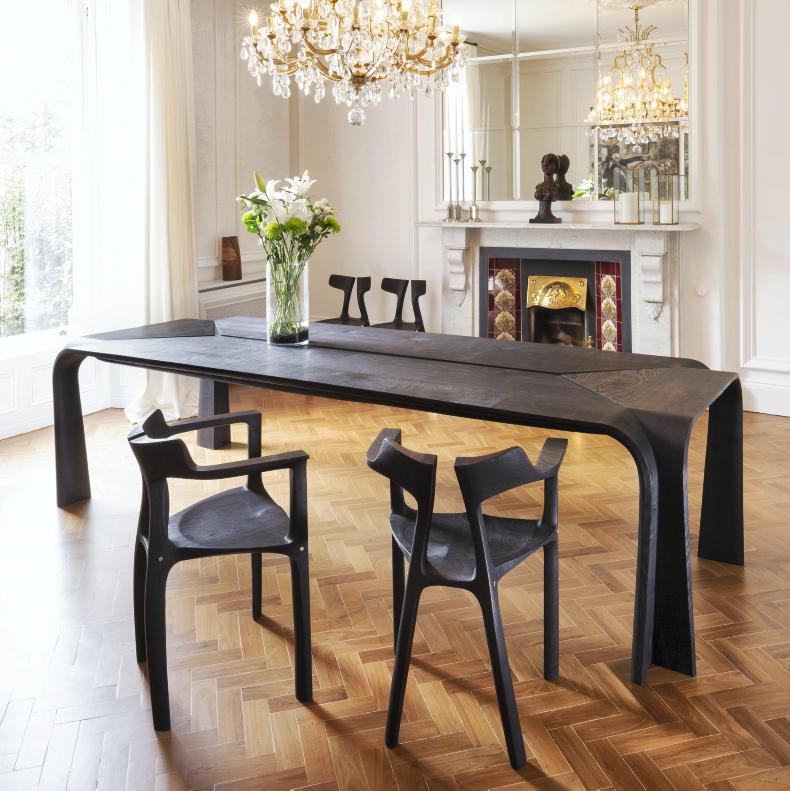
Quadriptych, by Alan Meredith Studio. Using the steam bending technique, furniture surfaces become table legs using a single plank of oak. The wood undergoes scorching and fuming, whereby ammonia fumes interact with the oak's natural whereby tannin to change its appearance.
We do, however, have a growing number of innovative designers, craftspeople and woodworkers who are creating their own wood culture mainly using hardwoods.
Advantage
The advantage of hardwoods over softwoods is that a relatively small supply goes a long way, as Irish designers and makers are proving.
Alan Meredith, a woodturner and furniture maker, is a strong advocate of homegrown hardwoods which he sources locally, especially from Mick Dunne in Clonmore Sawmill, Tullamore.
Based in Mountmellick, Meredith uses a range of techniques – traditional and contemporary – to transform oak and ash into creative furniture, mainly tables, chairs and shelves.
“Using the steam-bending technique, furniture surfaces become table legs while a single plank of oak travels through 180° to become two levels of a shelf,” he says.
The wood undergoes scorching and fuming, whereby ammonia fumes interact with the oak’s natural tannin to change its appearance.
Emmet Kane, also believes in the “less is more” philosophy as he maximises the value of homegrown timber. Based in Castledermot, he favours native species including oak, cherry, elm, holly and apple for his wood-turned and sculptural pieces. He has a particular fondness for Irish oak which he ebonises and gilds without losing sight of the wood’s unique characteristics.
In recent years, Irish oak has made an unexpected re-entry into the world of distilling.
Exports of sawn timber – in the form of staves – mainly to France and Spain for cask making began to decline in 1665 according to Eileen McCracken in The Irish Woods Since Tudor Times and died out completely by the end of the century.
In recent years, Irish oak is being exported from woodlands in counties Wicklow, Kilkenny and Laois to Galicia in Spain where it is sawn into staves, dried and worked into hogshead casks.
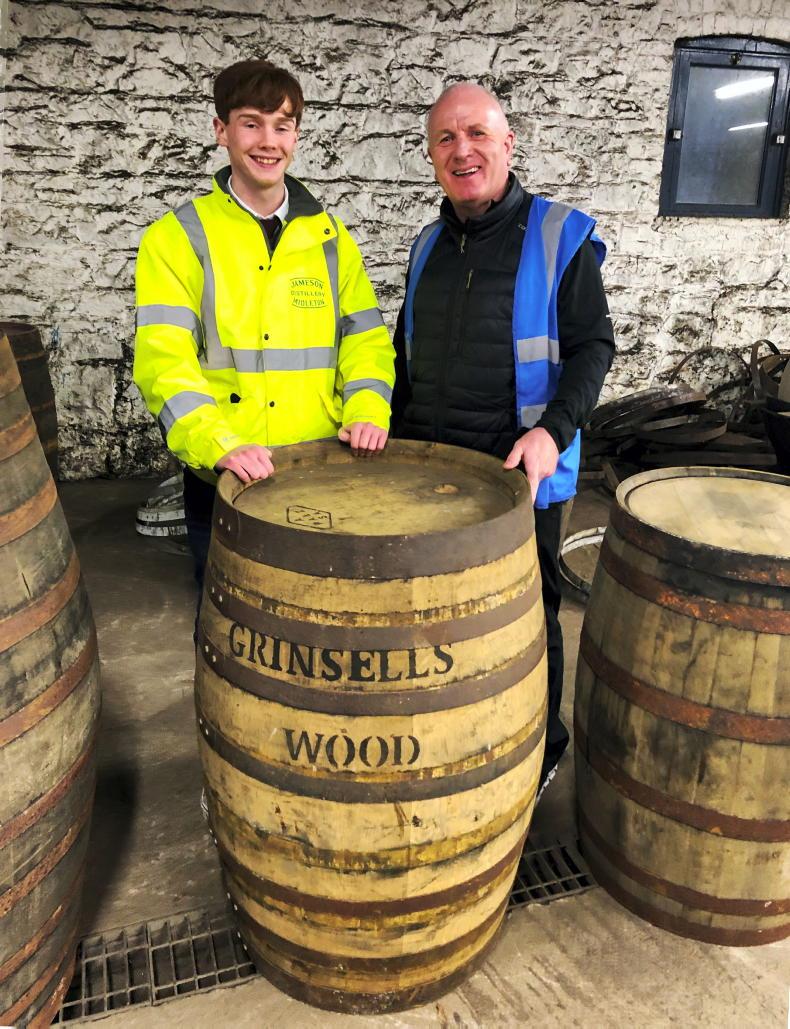
Diarmuid Madden and Don Fitzgerald, Midleton Distillery, with an Irish oak cask of Dair Ghaelach Single Pot Still whiskey. The oak was sourced in Grinsell’s Wood, Co Kilkenny.
These are shipped back to Midleton Distillery, Co Cork, where they are filled with a select range of 15- to 22-year-old single pot still distillates. The whiskeys are allowed to further mature until the master tasters judge them as ready for bottling as the company’s Dair Ghaelach range of single pot still Irish whiskeys.
New market
Paddy Purser, the project’s consultant forester, maintains this is an exciting new market for Irish oak. It is also lucrative.
“Coopering grade oak is making €500/m3 at the moment,” he says.
“This is a sustainable market as the number of trees required is small but the returns are attractive,” he adds.

He encourages owners to actively manage their woodlands. Regular thinning and pruning increase both yield and quality. Furniture-makers, sawmillers and those involved in the Dair Ghaelach project stress the importance of quality logs.
The new Forestry Programme places strong emphasis on planting broadleaves, which is reflected in attractive grants and premium payments.
Regardless of the forest type (FT), broadleaf planting will increase due to financial incentives for native species and availability of better-quality land, while those who establish mixed high commercial conifer crops will be required to plant at least 20% native or naturalised broadleaves.
The new programme and the native tree area scheme for small planting lots, if realised, will result in a considerable area of forests under broadleaves in the coming years. This will create a different national private forest estate which will require more intensive management than conifers over longer rotations.
Against this background, it is time to discuss the silvicultural and marketing challenges of planting and managing broadleaves – or hardwoods.
Even though broadleaves – mainly native – comprise 27% of Ireland’s forests, they provide less than 1% of total production (Table 1). There are a number of reasons for this imbalance.
Ash dieback is the most obvious reason while native species listed in the National Forestry Inventory such as willow, hazel, mountain ash and unimproved birch have little or no commercial value.
Despite this, there is a sizeable broadleaf resource that should be reaching the marketplace.
Little planning or research has been carried out in Ireland on marketing hardwoods, which may explain the poor output of the hardwood resource.
While there are a number of small sawmills specialising in hardwood and minor conifer species, these are not equipped with the technology to carry out work such as kiln drying or mechanical grading. Neither do they have the economies of scale to supply furniture and joinery markets. As a result, no timber and builder merchant in Ireland carries a stock of native hardwoods.
Worryingly, the few remaining small specialist sawmills are in decline.
Irish architects and designers invariably specify imported hardwoods although they maintained they would use homegrown species if available, when questioned by Stella Xenopoulou in a 2004 survey. This was the last comprehensive market review carried out on hardwoods, which showed that over 250 full-time businesses use homegrown hardwoods.
Additional information
This survey, funded by COFORD, called for additional information on hardwoods, especially on “drying, grading, sanding, staining and painting”.
In conclusion, Xenopoulou stated: “The value of the homegrown hardwood market in Ireland should also be reviewed, together with an employment study.”
It is time that this study was renewed to include native tree improvement programmes to add to the current birch and alder projects being carried out by Teagasc.
Less is more in building a hardwood industry
While Ireland has established a major softwood resource, we have a dearth of hardwoods. We have increased broadleaf afforestation from 5% of all planting in the 20th century to over 30% since 2000, but these new forests won’t mature until the second half of this century while our most common hardwood – ash – has succumbed to the ash dieback disease.
We don’t have a commercial indigenous hardwood manufacturing industry to supply the furniture, panelling, joinery and flooring markets.

Quadriptych, by Alan Meredith Studio. Using the steam bending technique, furniture surfaces become table legs using a single plank of oak. The wood undergoes scorching and fuming, whereby ammonia fumes interact with the oak's natural whereby tannin to change its appearance.
We do, however, have a growing number of innovative designers, craftspeople and woodworkers who are creating their own wood culture mainly using hardwoods.
Advantage
The advantage of hardwoods over softwoods is that a relatively small supply goes a long way, as Irish designers and makers are proving.
Alan Meredith, a woodturner and furniture maker, is a strong advocate of homegrown hardwoods which he sources locally, especially from Mick Dunne in Clonmore Sawmill, Tullamore.
Based in Mountmellick, Meredith uses a range of techniques – traditional and contemporary – to transform oak and ash into creative furniture, mainly tables, chairs and shelves.
“Using the steam-bending technique, furniture surfaces become table legs while a single plank of oak travels through 180° to become two levels of a shelf,” he says.
The wood undergoes scorching and fuming, whereby ammonia fumes interact with the oak’s natural tannin to change its appearance.
Emmet Kane, also believes in the “less is more” philosophy as he maximises the value of homegrown timber. Based in Castledermot, he favours native species including oak, cherry, elm, holly and apple for his wood-turned and sculptural pieces. He has a particular fondness for Irish oak which he ebonises and gilds without losing sight of the wood’s unique characteristics.
In recent years, Irish oak has made an unexpected re-entry into the world of distilling.
Exports of sawn timber – in the form of staves – mainly to France and Spain for cask making began to decline in 1665 according to Eileen McCracken in The Irish Woods Since Tudor Times and died out completely by the end of the century.
In recent years, Irish oak is being exported from woodlands in counties Wicklow, Kilkenny and Laois to Galicia in Spain where it is sawn into staves, dried and worked into hogshead casks.

Diarmuid Madden and Don Fitzgerald, Midleton Distillery, with an Irish oak cask of Dair Ghaelach Single Pot Still whiskey. The oak was sourced in Grinsell’s Wood, Co Kilkenny.
These are shipped back to Midleton Distillery, Co Cork, where they are filled with a select range of 15- to 22-year-old single pot still distillates. The whiskeys are allowed to further mature until the master tasters judge them as ready for bottling as the company’s Dair Ghaelach range of single pot still Irish whiskeys.
New market
Paddy Purser, the project’s consultant forester, maintains this is an exciting new market for Irish oak. It is also lucrative.
“Coopering grade oak is making €500/m3 at the moment,” he says.
“This is a sustainable market as the number of trees required is small but the returns are attractive,” he adds.

He encourages owners to actively manage their woodlands. Regular thinning and pruning increase both yield and quality. Furniture-makers, sawmillers and those involved in the Dair Ghaelach project stress the importance of quality logs.







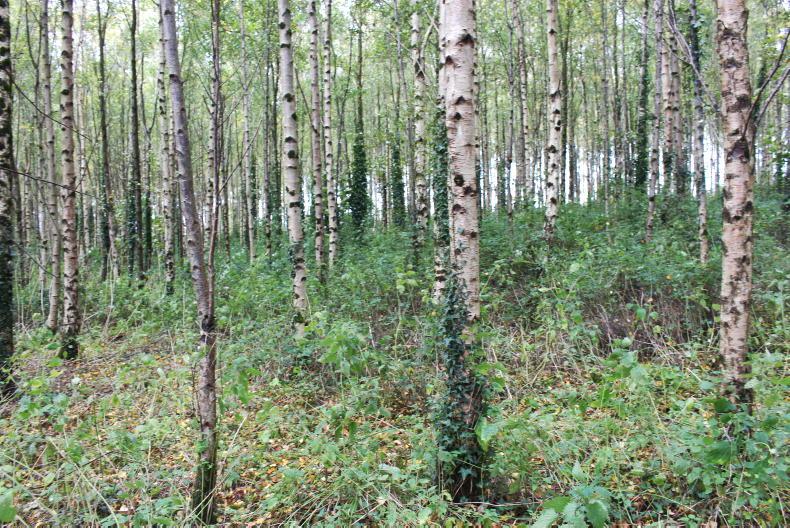
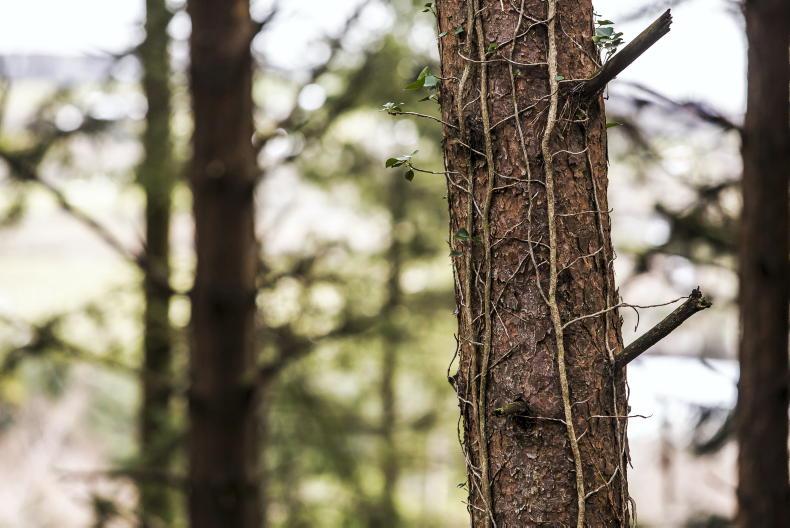

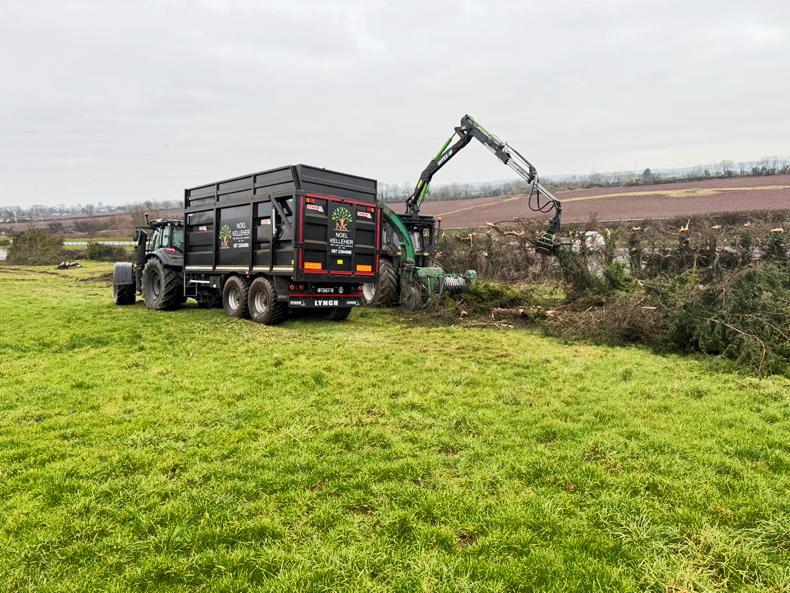


SHARING OPTIONS